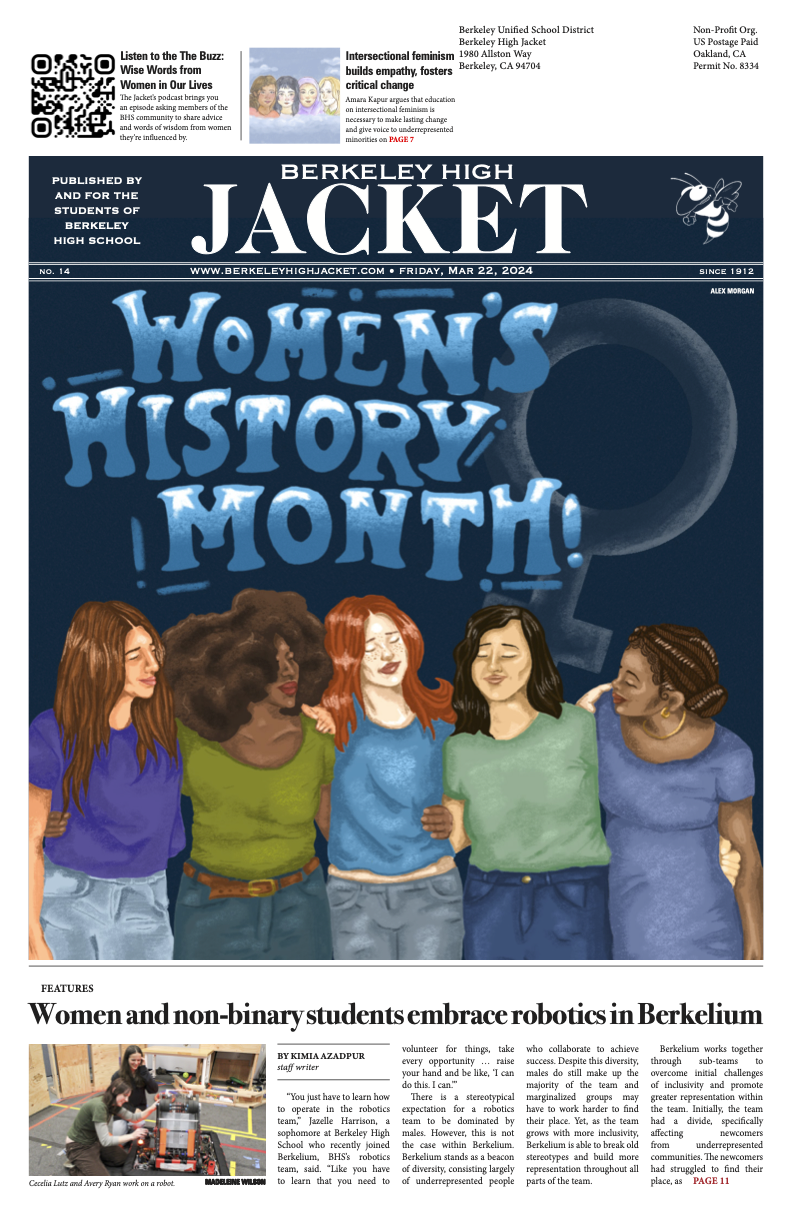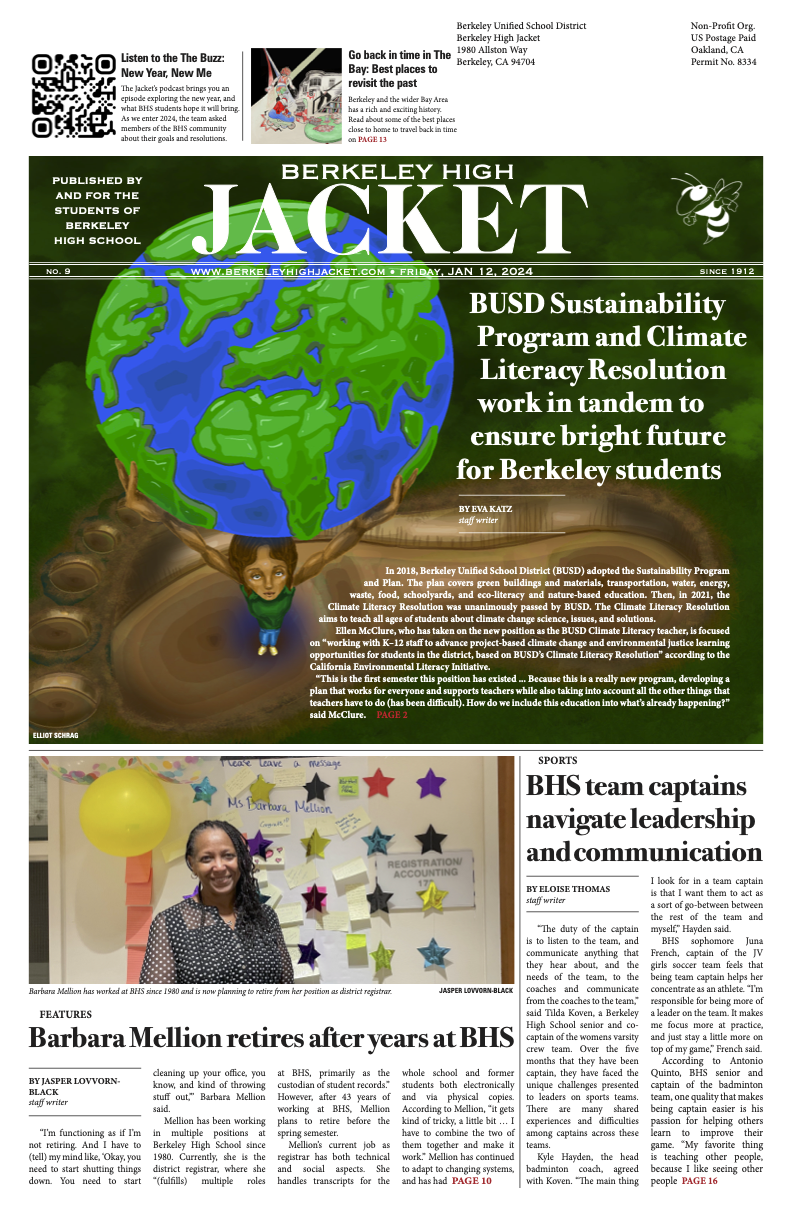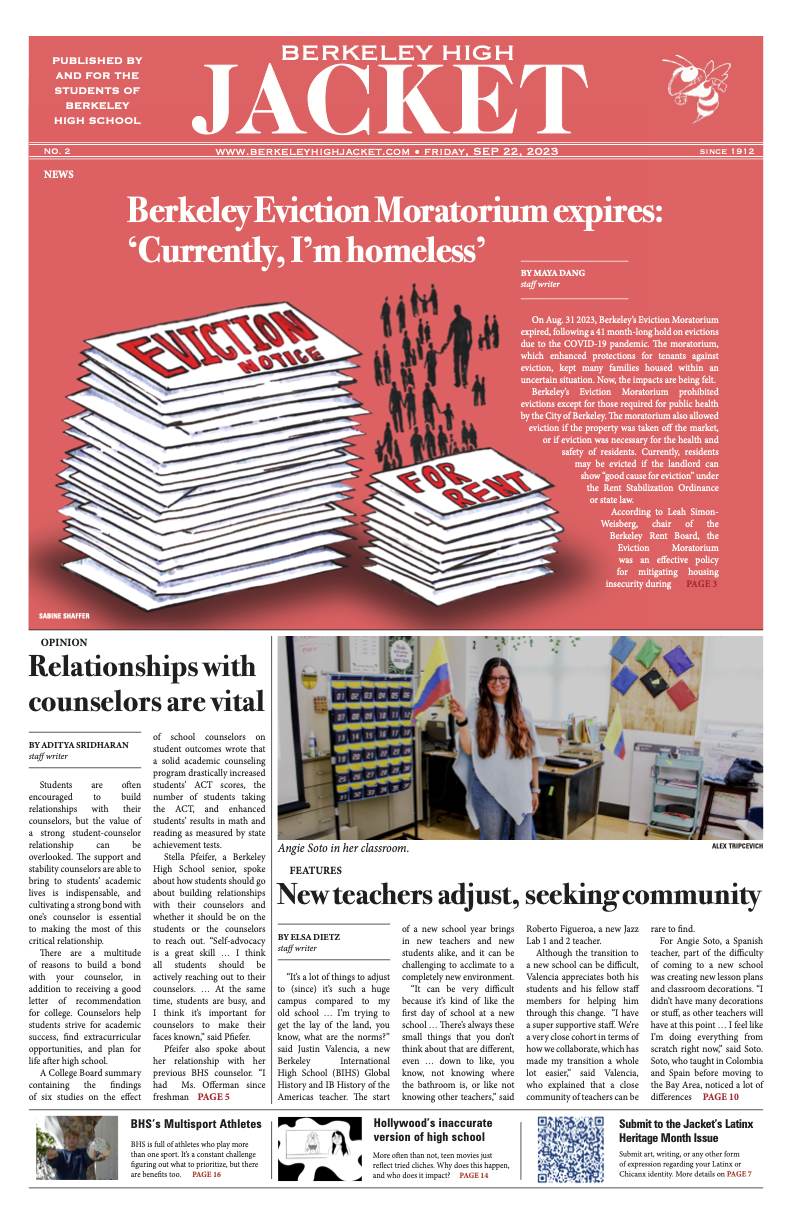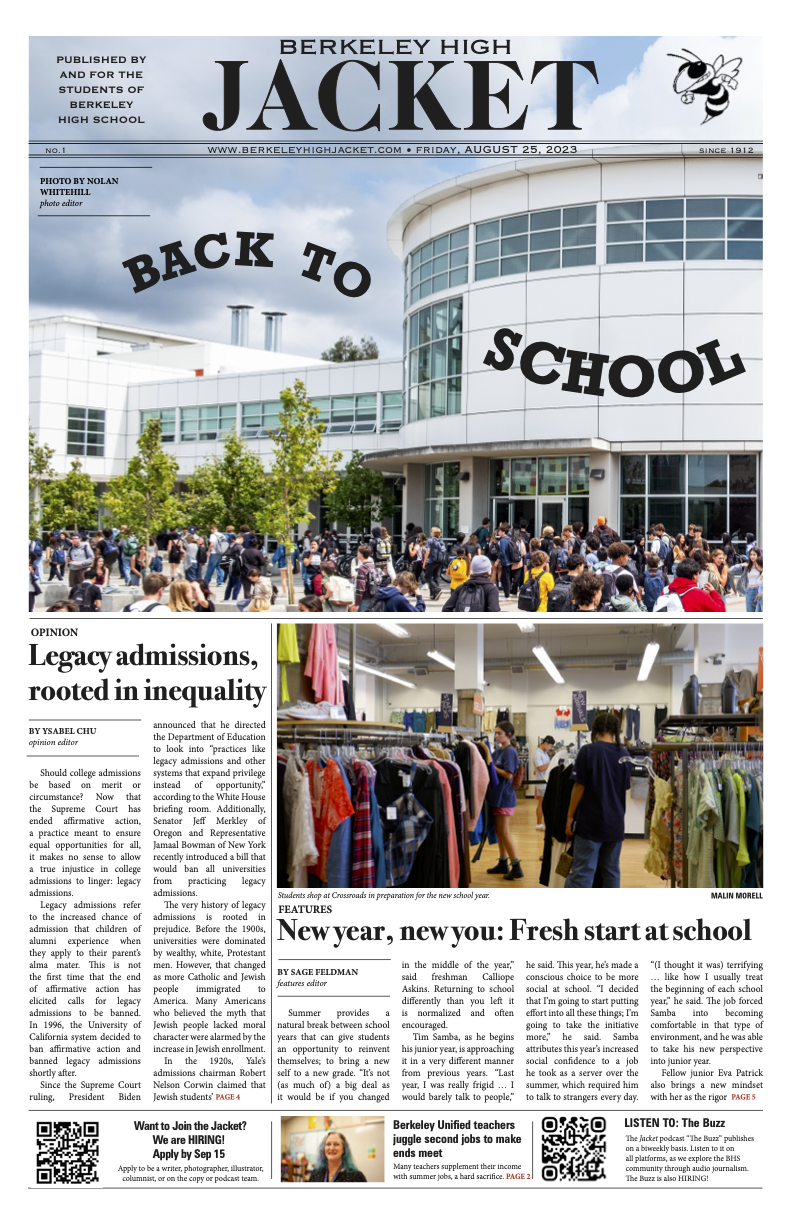“I think there’s a pretty big substance abuse culture, or substance use culture at Berkeley High (School). I’ve talked to all my friends about it. I’ve seen it a lot too,” BHS senior Sachin Rozycki-Shah said. A City of Berkeley Health Status Report in 2018 corroborates Rozycki-Shah’s observation, reporting higher teenage substance use for juniors at Berkeley Unified School District than the state average. Additionally, according to a 2021-22 California Healthy Kids survey, around 41 percent of freshmen and around 56 percent of juniors at BHS reported being under the influence of drugs or alcohol before, with 9 percent of freshmen and 16 percent of juniors reporting having used substances on campus.
“There’s a lot of people that have friends that have gone to rehab (and) a lot of friends that have fallen into doing worse drugs,” Rozycki-Shah said, “It’s more normalized in Berkeley in general than in other places and definitely among high schoolers. I feel like most places you go, there (isn’t) such a crazy substance culture like there is at Berkeley High.” He elaborated, “Especially in Berkeley just where we grew up, I feel like it’s very easy to fall into substance abuse and the negative effects of smoking and doing other drugs.”
Substance use has detrimental effects on learning, such as blocking neural pathways and leading to more absences, according to the National Library of Medicine. Those who regularly consume substances, especially adolescents, have an increased risk of lung or heart disease, stroke, and cancer.
Substance use has also been directly linked to higher rates of anxiety, depression, and other forms of mental health problems according to a study by the National Institute on Drug Abuse.
On campus, bathrooms are known to be a particularly popular location for substance use, according to BHS senior Cole Geurtsen, and spotting someone smoking or vaping there is common. “It's become a thing to, like, vape in the bathrooms, or hit a cart in the bathrooms,” Geurtsen said.
Juliet Distefano, BHS senior and the co-president of the Harm, Education, and Reduction Organization (HERO) club — a student-run peer education club that teaches BHS students about the dangers of substance use — said that in BHS bathrooms “95 percent of the time there's someone doing some sort of substance, typically vaping. I think (that) people really have normalized vaping more so than other things.” This is consistent with national substance use patterns, as e-cigarettes were the most popular tobacco product among middle and high school students in the United States, with 26.3 percent reporting using a vape daily, according to a 2024 study from the Centers for Disease Control and Prevention (CDC).
Some students, especially underclassmen, are even dissuaded from using the bathroom during class due to this activity. “Everybody is smoking. It's like, it's part of the culture. I'm scared to go to the bathroom because people are smoking,” BHS freshman Ryan Gillespie said.
Geurtsen attributes the prevalence of such behavior to BHS’ size. “I think because (BHS) is so big you kind of get a bunch of students who do end up vaping and stuff in the bathrooms,” he said. However, he explained that substance use has been widely regularized by the current generation, not just at BHS. “(Substance use) is sort of an issue you can see across most schools in our area, and I feel like across the country as well,” Geurtsen said.
Furthermore, according to on-campus intervention specialist Rashad Andrews, some students believe it’s acceptable to vape and use marijuana on campus, which normalizes substance use.
“I think a lot of students do recognize the fact that (substance use) is a very present thing at our school (and) in our city,” Distefano said. She and other HERO peer educators have noticed the normalization and acceptance of this culture at BHS, she explained. Distefano said, “I think (that) a lot of other people, like the students that we're presenting (to), kind of see it as like, ‘Oh, (substance use) is just a thing that's there and that's kind of just what's going to happen.’”
Reasons for substance use are varied. Cassandra Tesch, BHS Dean of Students, stated, “I think that people in every culture and society experience different types of trauma, and as humans, we cope with that trauma in different ways.” Tesch added that some people “find different ways to kind of blow off steam and to address mental health issues. Some people are introduced to and influenced by others to self-medicate with weed or other drugs or alcohol.” According to a CDC study, 73 percent of adolescents reported using substances to feel relaxed, and 44 percent to stop worrying about a problem or forget bad memories.
From Rozycki-Shah’s perspective, there are both mental and social aspects to using substances. He explained that some students will “smoke or drink because they’re stressed, and other people just kind of do it because their friends are doing it.” The pervasiveness of social use has been reflected in national statistics as well; the CDC reports that 80 percent of adolescents who used alcohol, marijuana, or non-prescription drugs did so with friends.
In terms of correction measures for students who are found in possession of illegal substances, Tesch explained that first, “(there’s) a conversation of what's going on, why did this happen? And then we have means of correction as an alternative to suspension.”
“Our Wellness Center has in the last few years partnered with the Health Center and outside organizations to carry out Parent Education Nights. We speak about the differences between experimenting, abuse, and dependence. We empower families to speak with their children. And we go over resources,” BHS principal Juan Raygoza wrote in an email to the Jacket. The Wellness Center was created to provide a space on campus where all students can reset, recharge, and make connections, according to its website. They provide services to students such as wellness check-ins, mental health referrals, brief interventions, and substance use prevention and education. Such support for overcoming substance abuse and addiction has been proven to be vital, as 63.9 percent of students who currently used e-cigarettes reported wanting to quit in a 2020 study conducted by the Journal of Adolescent Health.
The issue of substance use is not being ignored by students either; HERO is one example of student actions addressing substance use. Distefano explained that HERO’s mission is to “bring awareness and resources about harm reduction, specifically with drugs and other substances.” The club’s goal is to educate all BHS students about substance use, especially freshmen, to reduce harm or prevent overdose, according to Distefano. “We teach people harm reduction techniques, like dosage and tolerance,” Distefano said, “It's better to help people (with substance use) if things are going on, as opposed to just leaving the risk (of overdose or misuse).”
According to Geurtsen, more student-run programs would be beneficial. Geurtsen recommended “try(ing) to provide service for students in that area,” specifically through therapy-based approaches. He believed that substance use education would have to be part of a long-term fix. “I think more programs and stuff run by the actual BHS community would be a lot more beneficial,” Geurtsen said, “With all the support groups you see today, and with all these different programs you can join, I feel like there isn't so much of a stigma behind seeking help when it comes to substance abuse.”





